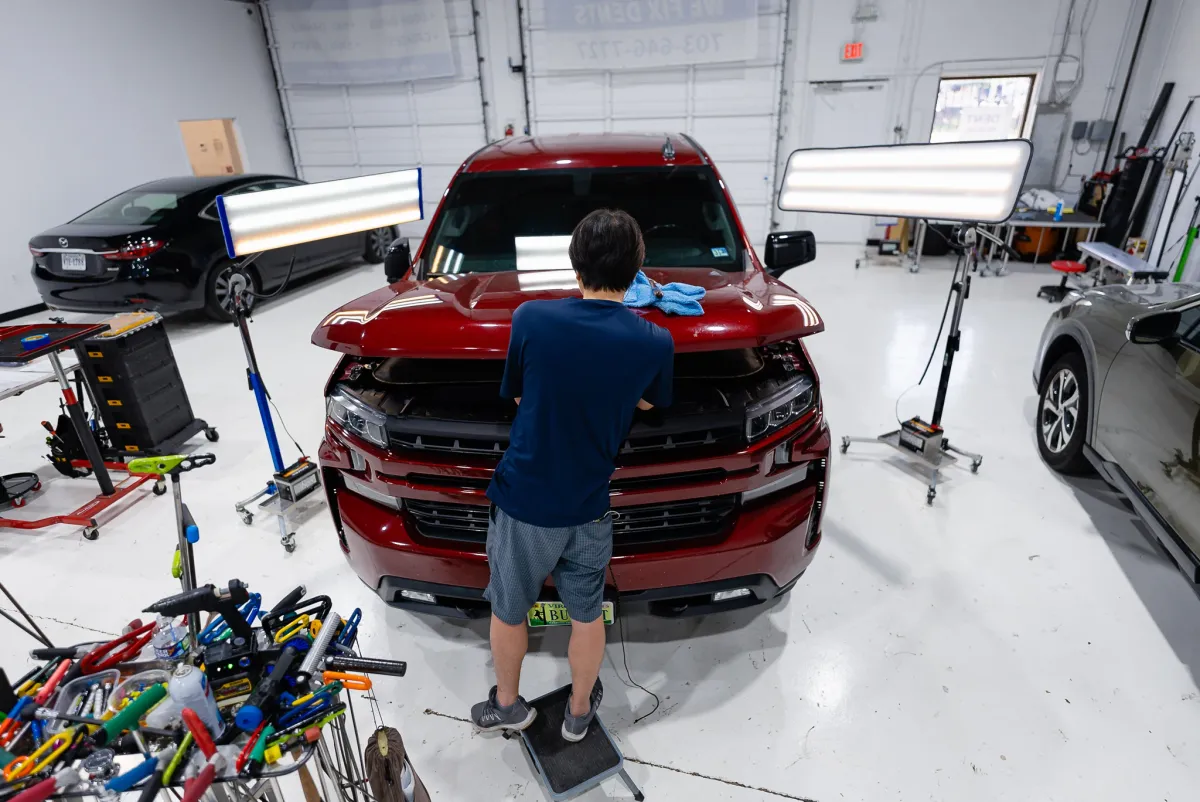25 Pros and Cons: PDR vs. Bodyshop

When it comes to repairing dents and dings on your vehicle, two popular choices emerge Paintless Dent Repair (PDR) by Dentless Touch Chicago and traditional body shop repairs. In 2024, staying informed about the latest trends and techniques in vehicle repair is crucial, and understanding the unique advantages of Paintless Dent Repair and Dentless Touch Chicago can significantly influence your decision-making process.
Dentless Touch Chicago, a leading provider of PDR services, utilizes cutting-edge techniques for paintless dent repair, ensuring high-quality, efficient service. Our comprehensive comparison chart, incorporating the latest advantages and disadvantages, outlines the key pros and cons of both PDR by Dentless Touch Chicago and traditional body shop repairs. This comparison is designed to provide a clear, concise overview, highlighting factors such as cost-effectiveness, repair time, environmental impact, and suitability for various types of vehicle damage in the context of the latest automotive 2024 industry standards.
Whether you're dealing with minor dents or more extensive body damage, this comparison will guide you in choosing the repair method that best suits your needs, while also aligning with the latest trends and advancements in the field. By choosing Dentless Touch Chicago, you're opting for a service that is at the forefront of the paintless dent repair industry in 2024, ensuring your vehicle receives the best care with the most advanced techniques available.
Paintless Dent Repair (PDR)
Pros:
- Cost-effective compared to traditional body shop repairs.
- Maintains original paint, preserving vehicle's resale value.
- Faster turnaround time than body shop repairs.
- Environmentally friendly, with no need for paint or fillers.
- No risk of paint color mismatches.
- Can be performed mobile, providing convenience.
- Insurance approved method of repair.
- Less labor-intensive, reducing labor costs.
- Preserves original metalwork, enhancing structural integrity.
- No need for sanding, grinding, or repainting.
- Reduces the risk of future rust issues.
- Can improve lease return inspections.
- No extensive disassembly of vehicle parts required.
- Less likely to affect the vehicle's Carfax report negatively.
- Can be used on both aluminum and steel panels.
Cons:
- Not effective for structural damage.
- Limited to areas accessible by PDR tools (structure, unibody).
- Ineffectiveness on dents with severe paint damage.
- Paint damage around the dent can't be fixed with PDR.
- Not suitable for dents on plastic parts.
- Not everyone can perform PDR.
- Limited use on older vehicles with brittle paint.
- May not be effective on vehicles with thick paint or multiple paint layers (repaint).
- Some locations on a vehicle may be difficult to access.
- Potential for damage to adjacent areas if not done correctly.
Body Shop Repairs
Pros:
- Ideal for large structural damage or severe car accidents.
- Can repair areas inaccessible to PDR tools.
- Effective for dents with sharp edges or creases.
- Can fix paint damage alongside dent repair.
- Suitable for all vehicle parts, including plastic.
- Comprehensive repair options beyond dent removal.
- Can accommodate older vehicles with brittle paint.
- Effective for vehicles with thick paint or multiple layers.
- Suitable for structural repairs beyond cosmetic issues.
- Often backed by more extensive warranties.

Cons:
- More expensive due to labor and material costs.
- Longer repair times compared to PDR.
- Potential for paint color mismatches.
- May decrease vehicle's resale value by altering original paint.
- Environmental impact due to use of paint and fillers.
- Can lead to future rust issues if not done properly.
- Involves extensive disassembly of vehicle parts.
- More likely to affect vehicle's Carfax report.
- Higher risk of inconsistent quality depending on the shop.
- Inconvenience of leaving vehicle at the shop for extended periods.
- Potential for overestimation of repair needs and costs.
- Some repairs may not fully restore the vehicle's original appearance.
- Risk of additional damage during the repair process.
- Not always the best option for minor dents.
- Less environmentally sustainable compared to PDR.
Dentless Touch Chicago
229 Eisenhower Lane S.
Lombard, IL 60148
Comments ()